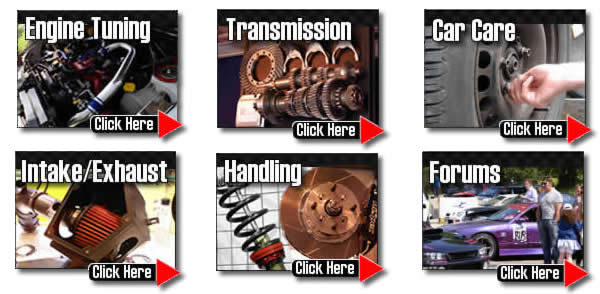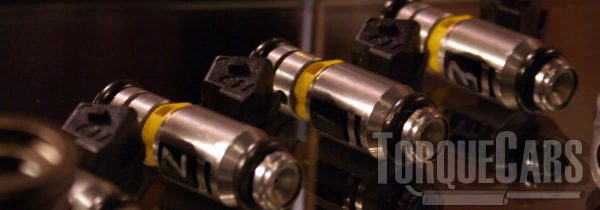Tuning the Rover 200
"Thanks for reading my Rover 200 tuning tips."
I had a 220GTi and this was my first project car, you can read about it on here, and it was why I started this website all those years ago. It bought much pleasure and a bit of pain, but the chassis is brilliant with lift off oversteer and really nice balance.
The 200 is a awesome car tuning project to play with. Plan ahead and research 200 tuning to avoid making the usual disastrous slip ups we often hear people complain about.
The Rover 200 are awesome to work on and with a few sensible motorsport mods like remaps, turbo kits and camshafts you will substantially improve your driving experience.
TorqueCars will review 200 tuning and outline the optimum modifications.
The Rover 200 SD3 from 1984 to 1989 shared much with the Honda Ballade in design and engines on offer.

Handling/Suspension upgrades
Handling modifications are at the top of your mod list for the 200.
If you set the toe out to 1-1.7 degrees on the front, and add a tiny bit of negative camber then cornering will greatly be enhanced.
Drop the car by as much as 28mm - 36 mm. and fit modified stiffer dampers, bigger drops will need other modifications in most instances.
Top end power should be your overall aim on the 200 with a nice fat peak torque band.
Smaller engines do not provide much of a return in terms of power so start with a bigger engine. Engine swaps are a good option if you have a small engine size.
Engine Tuning.
Typically these upgrades are usually installed by our members, decide how far you wish to go in your tuning project before you begin.
SD3 1984–1989
- 1.3 L Honda EV2 I4 (petrol)
- 1.6 L S-Series I4 (petrol)
R8 Rover 200 Mk2
- 1.4 L K-Series I4 (petrol)
- 1.6 L K-Series i4 (petrol)
- 1.6 L Honda D16A6 I4 (petrol)
- 1.6 L Honda D16A8 I4 (petrol)
- 2.0 L M-Series I4 (petrol)
- 2.0 L T-Series i4 (petrol) "Tomcat"
- 1.8 L PSA XUD7 TE I4 (turbodiesel)
- 1.9 L PSA XUD9 A I4 (diesel)
R3 1995-1999
- 1.1 L K-Series I4 (petrol)
- 1.4 L K-Series I4 (petrol)
- 1.6 L K-Series I4 (petrol)
- 1.8 L K-Series I4 (petrol)
- 1.8 L K-Series VVC I4 (petrol)
- 2.0 L L-Series I4 (turbodiesel)
Engine swaps were popular, the 1.4 block was very similar to the 1.8VVC and there are lots of options for the 1.8 VVC including a turbo conversion.
Getting the correct grade of performance mods for your planned usage of the car is vital. Stage 3 competition upgrades just won't work well on the road hard to control in slow traffic.
Please watch our introduction Video tutorial to car tuning. Be sure to subscribe and support our new channel.
How to tune your car
- Improve the handling
Focus on Suspension improvements, such as coilovers and make sure the bushings are in good order and that the alignment is correct. Then focus on improving the brakes, with a big disk brake conversion kit and fast road brake pads.
- Remove restrictions
Focus on the intake and exhaust with filters being the common point of restriction in a tuned car. Intercoolers may also become restrictive on turbo engines so this may also need to be uprated.
- Burn more fuel & air
Increase the fuelling so it matches the air coming into the engine. The ratio is important so you need to improve the fuel pump and injectors, so the head mods, big valve conversions, fast road camshafts and forced induction upgrades extra supply of air is adequately met.
- Test and replace any weak parts
Weak areas are commonly the clutch, the turbocharger and pistons and crankshaft in a highly tuned engine. Makes sure these components will cope with your power aspirations.
- The Tune or Remap
A cars ECU controls the fuel, timing, spark and even the turbo in some cases, so to fully extract your gains you should remap the car last and this will fully release the power. Some cars are easy to map, and others require piggyback ECU's or aftermarket ECU's but this is the most vital step of your tuning project.
Modifying to Stage 1:
Panel air filter, Suspension upgrade (drop 28mm - 36 mm.), Remap (Piggyback ECU), Alloy wheels, Sports exhaust, Lighter flywheel.
Modifying to Stage 2:
Ported and polished head, Power/Sport clutch, Fast road cam, fuel pump upgrades, high flow fuel injector.
Modifying to Stage 3:
Competition cam, Internal engine upgrades (pistons/head/valves), Adding or upgrading forced induction (turbo/supercharger), Engine balancing, Sports gearbox.
Peak power is nice in motorsport but for a drivable and fun car you need a long power band and perhaps extending the rev range.
In this article we shall give a limited introduction to the best modifications for your car, but we'd encourage you to spend some time on the site looking into the details of each type of performance upgrade.One of the biggest mechanical uprated upgrades you can do to your NASP engine is to fit a fast road cam .
It maximises the intake and exhaust durations and increases the power if done right. Ideally you'd add other mods and finish up with a performance chip (the Rover MEMS could not be remapped, but piggyback ECU's are around, ICON RACE was one we used). We'd also caution you not to go with a motor sports profile cam as this affects the engines idling and general town driving characteristics.
Don't forget to uprate the fuelling when you are increasing the power - it makes the car more thirsty.
Using high octane petrol is another option if you find you are suffering from detonation or premature ignition on your Rover project after fitting other modified mods.  Uprating the injectors is another beneficial modification and will deliver sufficient fuel.
Uprating the injectors is another beneficial modification and will deliver sufficient fuel.
A fuel pump will only deliver a finite amount of fuel, so you may need to uprate this if your injectors are demanding more fuel.
Intake and Exhaust Tuning.
Now we move on to the intake and exhaust and ensure proper flow through the engine.  Air induction kits are only beneficial to increase power if your cars air intake is struggling! Adding an induction kit to most standard engines will see LITTLE LOW END POWER GAIN AT ALL. If you have heavily modified your engine and it's need for air INCREASES DRAMATICALLY then an induction kit is the answer and will help remove this restriction.
Air induction kits are only beneficial to increase power if your cars air intake is struggling! Adding an induction kit to most standard engines will see LITTLE LOW END POWER GAIN AT ALL. If you have heavily modified your engine and it's need for air INCREASES DRAMATICALLY then an induction kit is the answer and will help remove this restriction.

Maximum power gains come from a full induction kit with a cold air feed on heavily tuned engines, this can be sited within an air box but a panel filter should suffice for most applications. TorqueCars suggest you use a panel air filter as these are easy to clean and maintain and generally perform better than paper ones.
Sports exhausts can help equal out the flow of air through the engine. But if the exhaust is too large, ie: over 2.5 inches bore, you will lose much of the flow rate and end up losing power and torque.
Polishing and porting the head will allow you to maximise your air/fuel charge. Leave this to a professional though with a proper flow bench and machine tools A good triple plate fast road performance clutch will help to keep that power going where it should. Never skimp or ask a standard OEM clutch to cope. The best mods we recommend for your 200 are Remapping or piggy back ecu, fast road cam and air intake and exhaust.
Turbo engines are just pleading to be Remapped. You will see massive power gains on most modern turbocharged cars including diesels making a remap one of the most cost effective and massive modifications for your money.
We've also come across some owners toying with twincharged applications and making some seriously high power hikes.
The most significant power gains for NASP engines usually involve the addition of forced induction. It is often simpler to add a supercharger than it is to install a turbo. Turbos give boost in exponential proportion to increasing engine speed and this can make mapping difficult.
The nice proportional boost and rpm characteristics of the supercharger make them more straightforward to map. Decreasing the engines compression ratio will allow you to add forced induction, water injection may also help prevent detonation.
Alloy wheel upgrades.
The benefits of alloy wheels include lowering your unsprung weight and more efficient brake cooling. We can't go into too much detail here about tires but they are how the car puts the power down on the road so are a critical choice. soft compound tires work well on 200, and make a big difference over budget tires. Large 200 alloys can decrease performance. If you get big alloys you will be changing your final drive ratio.
Due to this fact we would advise sticking to a maximum wheel size of 16 inches, although we know some of our members have installed larger rims with no problems.
For more information on Tuning your car please join us in our friendly forum where you can discuss 200 options in more detail with our 200 owners. It would also be worth reading our unbiased Rover tuning articles to get a full grasp of the benefits and drawbacks of each modification.
Please help us improve these tips by sending us your feedback in the comments box below.
We love to hear what our visitors have got up to and which mods work best for them on each model of car. Comments are used to improve the accuracy of these articles which are continually updated.
If you liked this page please share it with your friends, drop a link to it in your favourite forum or use the bookmarking options to save it to your social media profile.
Check out TorqueCars new YouTube channel, and see their awesome new content...
Feedback
Please use our forums if you wish to ask a tuning question, and please note we do not sell parts or services, we are just an online magazine.
Help us improve, leave a suggestion or tip
